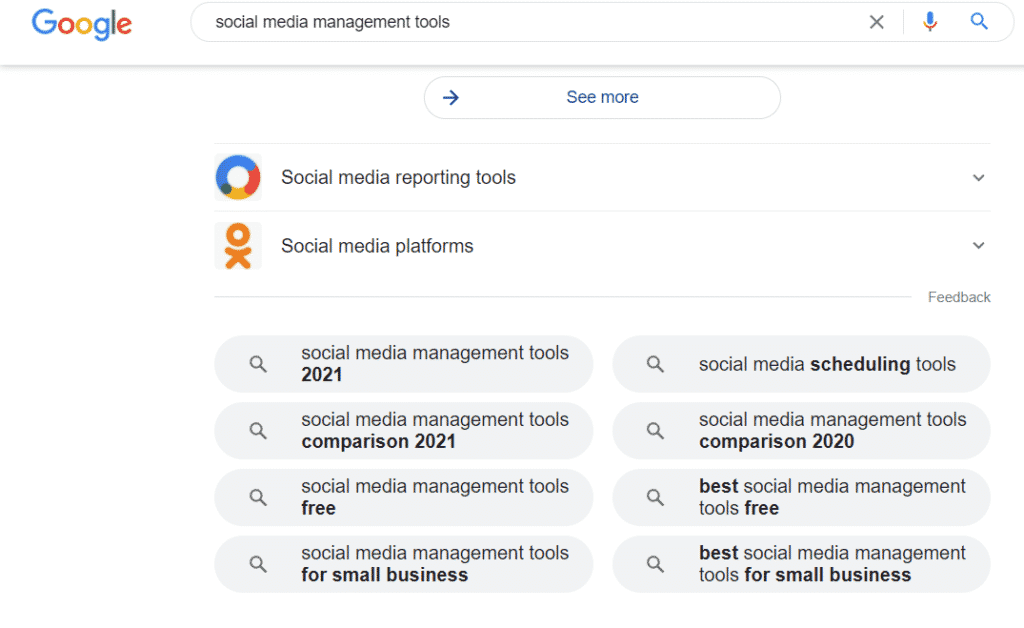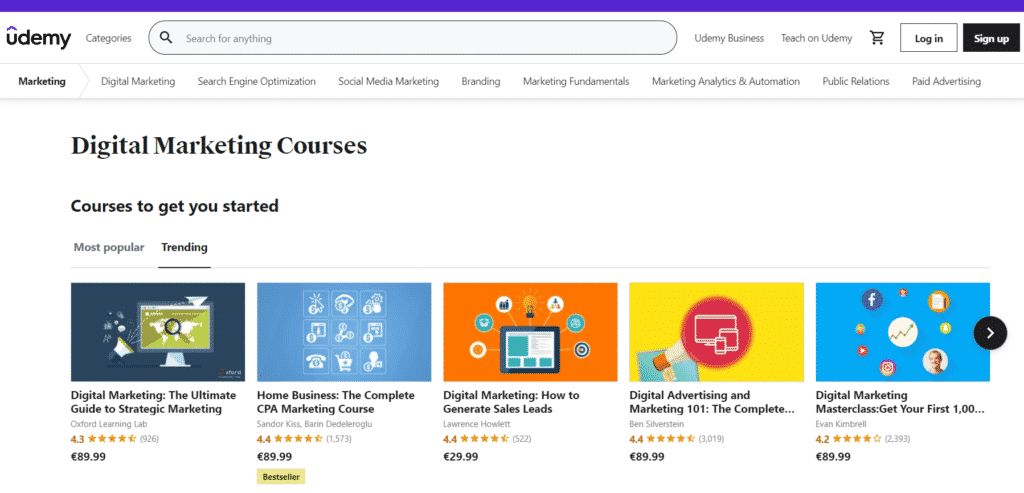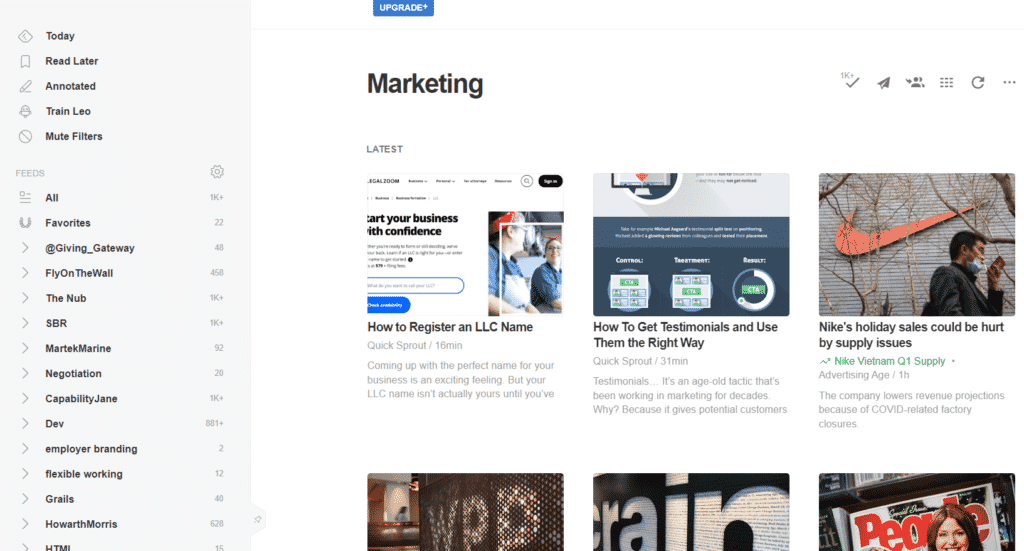You’ve probably been there, sitting in front of your laptop with a blank document, a coffee nearby, ready to write a new blog post, but the ideas are not there. You are stuck.
All writers can relate. However, it’s time to change that narrative.
Instead of waiting for great blog post ideas to come to you, how about you gain full control over the creative process?
How to Come Up With Blog Post Ideas
Let’s start by looking at 10 practices that will help you:
- Generate engaging ideas for blog posts
- Bring more traffic to your website than ever before
1. Search the Internet
Oh, the internet. The place of endless possibilities.
If you ever run out of blog post ideas, a quick search can reveal all the resources you need to inspire your inner creativity. So, if you don’t know what the topic for your next blog post should be, there is no reason to worry. You have all the information that ever existed at your fingertips, literally.
What you want to do first is to make a list of terms used in your industry. Then one by one, look them up on different search engines like Google, Youtube, and Quora.
Ultimately, you want to pay attention to the autofill suggestions and the searches that pop up on your page. You will discover multiple articles related to your niche that you can experiment with, as well as questions from users interested in your industry.
By paying attention to these aspects you will be able to blog topics that are genuinely interesting for your audience.
A great Google feature that you should pay attention to is the “Related searches” section at the bottom of the page. Here you will see other popular searches suitable for your blog.

2. Steal from the Competition
In times like these, competitors come in handy.
If you need new blog post ideas, now it’s time to do a competitor analysis. Here is what you need to do:
- Open a Google sheet.
- Make a list of your most important competitors.
- Evaluate their blog posts.
- Include relevant article links.
In the end, you will have a comprehensive list of blog topics that fit your niche. As a result, you will keep up with your competitors while creating relevant content for your customers.
You can use the free competition analysis template from our social media audit.
3. Ask Your Audience
When you are brainstorming new blog post ideas, the first thing you should do is consult with your audience. After all, you are creating content for them.
There are different ways you can go about it. You can go through your comments and mentions, your inbox and see if you can find any recommendations.
Another useful practice is to ask them on social media. In this way, you get to interact with your followers and boost your engagement levels.
It’s important to get your audience involved so that you:
- Show that you care about their opinion
- Create a community around your brand
- Write about blog topics that add value to their life.
4. Use Your Most Popular Posts
You are your most important resource. And in the same way, you draw inspiration from outside sources, you can draw inspiration from yourself.
So go through your analytics and look at your top-performing blog posts. As long as you have articles that bring a significant amount of traffic, you should consider investing more time in expanding them into a blog series.
For example, let’s say you have a popular article about the best colors for real estate. You can continue on the same pattern by writing about: the best real estate fonts, logos, etc. Eventually, you will have enough material to create a comprehensive guide to present to your audience.
Another idea is to update your old posts with new useful information that your audience will find valuable.
5. Invest in Media Monitoring Tools
Social listening tools are not only great for monitoring your online presence but are also effective in discovering new blog topic ideas. Moreover, you can set up alerts for specific keywords. In this way, you receive notifications whenever something new and relevant is posted on the subject.
Additionally, monitoring tools automate your research process by gathering all your mentions across the web on only one platform. Thus, saving you a lot of time and energy that you can now use to write for your blog.
To create blog posts with higher reach and engagement potential you should pay attention to the latest news and trends. And monitoring tools can help you identify blog topic ideas through metrics such as share of voice and volume of mentions.
6. Look through the Most Popular Online Courses
If there is one thing that the internet doesn’t lack is online courses. You can find tutorials for almost every imaginable topic, skill, career path, or hobby. And the best part is that they can help you come up with multiple blog topic ideas.
All you have to do is go to a platform like Udemy, select the category that best fits your industry, and draw inspiration from the most popular courses your audience enjoys.
Now that you have done your research you can start crafting the best blog articles.
7. Use the Skyscraper Technique
Writers use the Skyscraper Technique to look for content that will help them: find new ideas for blog posts, improve their website traffic, and build authority.
Here are the steps for the Skyscraper Technique:
- Find relevant content from your industry.
- Search for ways you can add value to the content.
- Create an article that contributes to the knowledge.
- Get in touch with the website owners and convince them to link to your blog post.
8. Conduct Interviews
The best way to mix up your blog content is to incorporate interviews into your strategy. You will not only surprise your followers, but you will also develop your writer skill set.
The first step is to find people that are willing to let you interview them. They can be industry leaders, relevant influencers, business partners, or even people from your company.
The second step is to create an interesting set of questions that will:
- Create a nice structure for your article.
- Provide the audience with valuable information.
- Tell the story of your guest.
The third step is to organize your information and give it a structure. This will make your article easy to follow and appealing to your readers.
9. Write How-To Articles
How-to articles are instructional posts that usually are focused on teaching readers to do a certain thing. This may be a very broad definition, but how-to articles apply to all fields and can vary from subjects like “How to Change a Tire” to others like “How to Run an Ads Campaign on Facebook.”
The best part about how-to articles is that they generate more ideas. You can easily create a series of articles that are part of a broader topic.
For example, if you want to write a complete guide on how to master social media advertising, you can start with articles that teach your readers how to create the text and the visuals for the ad. Then you can start by teaching them how to use advertising platforms, and continue until your audience is fully educated on the subject.
10. Use a Feed Reader
Start using a feed reader like Feedly to keep up with the latest news and articles. You can subscribe to different topics you are interested in and every day you will have a personalized article collection that you can use to come up with engaging content for your audience.
How to Write a Good Headline
Now that you have a list of intriguing blog post ideas, it’s time to learn how to write a good headline that will make your audience click on your article as soon as they read it.
We have prepared a list of five creative practices and 10 headline formulas that will help you generate new catchy titles faster and easier than ever. Let’s have a look!
1. Use Relevant Keywords
To catch your readers’ attention, you first have to make sure you appear in their searches. For this reason, you have to incorporate SEO practices to boost your content’s performance.
One of these practices is to incorporate keywords relevant to your niche into your headlines. This will help your article appear in the first results of an online search.
2. Intrigue Your Audience
Give your readers a reason to click on your article by teasing a piece of information of great interest to them. After all, you want to intrigue your audience enough to make them read your blog post.
For example, if you are writing an article about interior design, you can use a title like this: “These Five Interior Design Mistakes Can Make Your Rooms Look Smaller.”
3. Make a Promise
To promise something to your audience, you first have to research their main needs and desires. Based on this information, you can start crafting engaging headline ideas that will catch their attention and respond to one of their needs.
Maybe your readers want to learn how to exercise a new skill, or they need to find out how to cook a certain recipe. Regardless of your industry, you will always have something to teach your audience.
However, making a promise to your readers is not enough. You have to commit to your title and create an article that makes that promise possible.
4. Add Power Words
An engaging title contains attention-grabbing words.
No matter the topic of your headline, you can always add one or two words that can make it stand out. By using power words, you want to emphasize the benefits of your article and catch your readers’ attention.
Here are some power words examples that can elevate the impact of your titles:
5. Focus on Benefits
Why should your audience read your article? How does it benefit them?
This should be the focus of your headlines. After all, you are trying to convince your readers to invest time in your content. So your headlines act as advertisements for your blog posts.
Here is a title example that focuses on benefits: “Learn How to Ace a Job Interview in 10 Minutes.”
Headline Styles Every Writer Should Use
As a writer who always comes up with new content, it’s essential to exercise your creativity muscle in order to move past creative blockages that usually slow you down from achieving your daily tasks.
To help you overcome these challenges while writing your new list of headline ideas, we have prepared 10 formulas you can use whenever you need a little help.
Here are some effective headline structures that can inspire your next big headline:
- “Little Known Ways To…”
- “What You Have to Know About…”
- “How to … Without…”
- “How to … In X Easy Steps”
- “The Ultimate Guide To…”
- “The Fastest/Simplest/Most Effective Way To…”
- “X Reasons Why You Should…”
- “X Things Your … Doesn’t Want You to Know”
- “X Lessons I Learned From…”
- “X Mistakes You Should Avoid When…”
Before You Go
Catchy headlines, creative blog posts, what’s next?
Well, to make the most out of your blog posts, you should share them across your social media platforms. And what better way to do it than by using a social media management tool like SocialBee.
Make a content category specifically for your blog content, create social media posts to promote your articles, and schedule them at the best posting time to generate more traffic to your website.
Start your 14-day trial today and see if SocialBee is a good fit for you!













